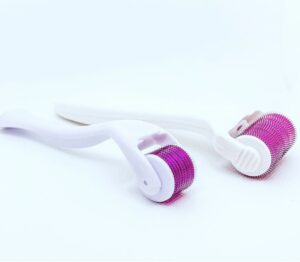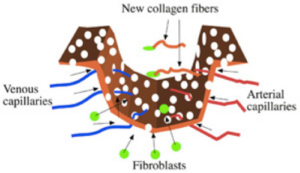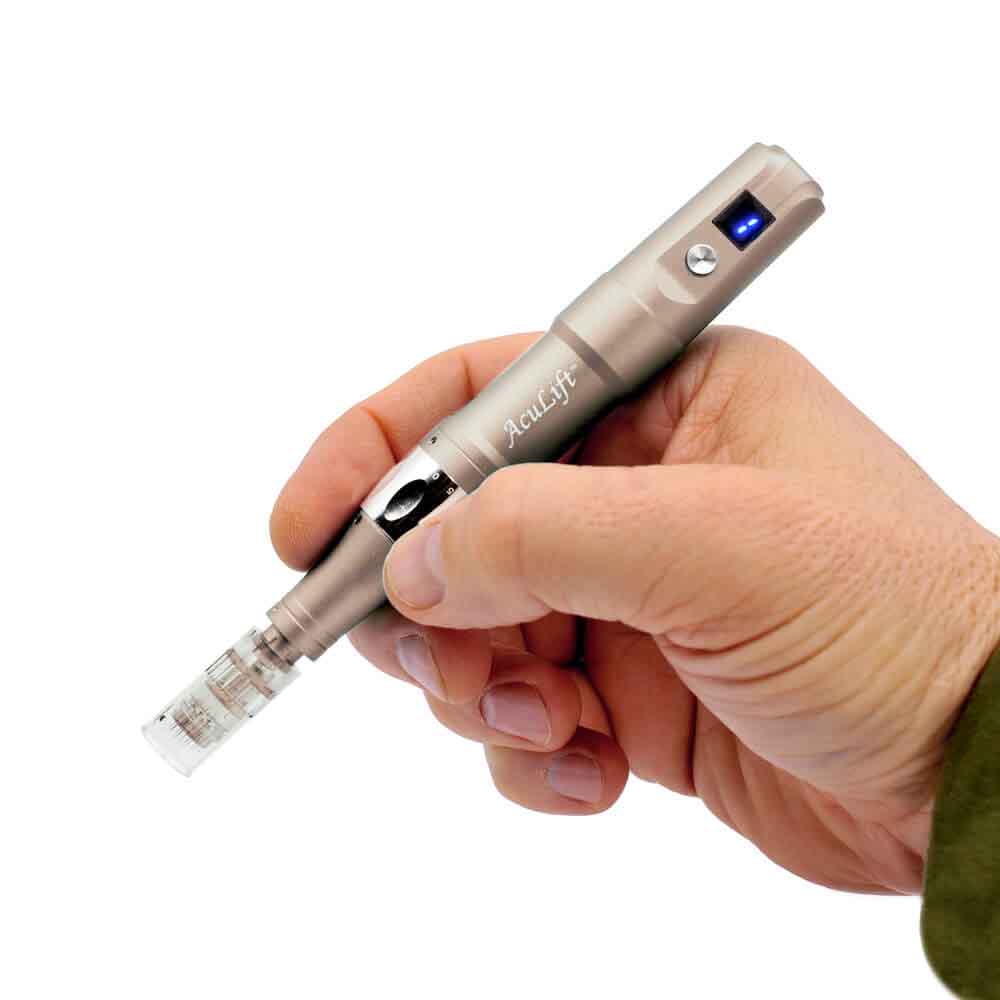Microneedling & Chinese Medicine
Michelle Gellis AP LAc MAc DiplAc
Microneedling has become very popular in our profession as a form of treating skin level concerns. As an educator of facial and cosmetic acupuncture I am frequently asked how it fits within our scope of practice.
The use of needles to beautify the skin has been part of Chinese medicine for thousands of years. In Chinese the practice is referred to as 美 (mei) 容 (rong), which translates to Beautiful Appearance. This holistic regimen practiced throughout Asia for centuries has been used to promote systemic wellness and delay visible signs of aging.
Although the terminology and tools are slightly different, microneedling (also known as collagen induction therapy) is almost identical in principle and practice to circling the dragon to treat scars or using intradermal needles or a seven-star hammer/plum blossom needle to treat hair loss and skin concerns such as wrinkles and dyschromia. Seven-star hammers are used in Chinese medicine to treat blood stagnation, neuropathy, scars, and alopecia*. Intradermal needles (small needles typically inserted with tweezers) are inserted superficially bringing blood and qi to the skin to stimulate the proliferation of collagen. Techniques such as threading and surrounding the dragon with acupuncture needles release stagnation, fascial adhesions and encourage the regrowth of healthy skin cells. Microneedling with a MicroPen, Derma Roller, or Derma Stamp mimics these techniques with modern devices.


One of the principles of Chinese medicine emphasizes the connection and harmony of the body in which the external “skin” is closely related to the internal “organs.” Therefore, stimulation of the skin has been used to stimulate internal organs to restore balance in the body. When I teach or practice microneedling I do so as a holistic practice incorporating TCM and 5-element diagnosis and treatment of the entire body. Body points help to build qi, yin, bones, and blood, move stagnant fluids, qi and blood. In order to treat the outside, you must treat the inside and vice versa.

Microneedling, also referred to as Collagen induction therapy works by stimulating the immune system and wound-healing mechanisms. As the microneedles penetrate the skin causing micro-wounds, it triggers an intense inflammatory reaction that begins a cascade of subsequent reactions
The skin’s nerve receptors and defense mechanisms sense these fine needle intrusions as a specific type of injury and heals accordingly. During the healing process, skin cells (within a 1 to 2 mm radius around the pricking channel) release growth signals to undifferentiated cells otherwise known as skin stem cells. These signals also stimulate rapid growth of new fibroblasts and other wound repairing cells.
Many cell types including new fibroblasts rush to close the wound by migrating to the point of intrusion. These new fibroblasts then transform into collagen fibers which integrate with existing collagen in the upper dermis.
The new collagen fibers thicken the skin, fill in wrinkles and encourage the growth of healthy new skin cells. This process works with your body’s natural healing ability and will keep your skin looking young and vibrant.
In conclusion, microneedling treats the skin with the insertion of needles in the same way that intradermal needles, threading, needles seven-star hammer treat the skin. It is a superficial level treatment like any cosmetic acupuncture treatment and when combined with diagnosis and treatment of underlying issues can affect a deeper level of change.
On my company website aculiftskincare.com there are several blog posts on Microneedling and Derma rolling. Below are links to studies** that have been done on microneedle therapy. you can also visit me on facebook or instagram
*https://apm.amegroups.com/article/view/42161/html
**Studies on microneedling:
- Gill, H.S., Denson D.D., Burris, B.A. & Prausnitz, M.R. (2008). Effect of microneedle design on pain in human subjects. Clin J Pain. 24(7), 585-594.
- Fernandes, D. (1996). Upper lip line treatment. Paper presented at the ISAPS conference Taipei, Taiwan.
- Badram, M.M., Kuntsche, J. & Fahr, A. (2009). Skin penetration enhancement by a microneedle device (Dermaroller) in vitro: Dependency on needle size and formulation. European journal of pharmaceutical sciences. 3, 6, 511-523.
- Aust, M.C., Knobloch, K., Reimers, K. Redeker, J., Ipaktchi, R., Altintas, M.A., Gohritz, A., Schwaiger, M. & Vogt, P.M. (2010). Percutaneous collagen induction therapy: an alternative to treatment for burn scars. Bruns. Sep 36(6), 836-43. Epub 2010 Jan 1
- Kim S.E., Lee, J.H., Kwon, H.B., Ahn, B.J. & Lee, A.Y. (2011). Greater collagen deposition with the micro needle therapy system than with intense pulsed light. Dermatol Surg. Mar 37 (3), 336-341.
- You, S.K., Noh, Y.W., Park, H.H., Han, M., Lee, S.S., Shin, S.C. & Cho, C.W. (2010). Effect of applying modes of the polymer microneedle -roller on the permeation of L-ascorbic acid in rats. J Drug Target. Jan 18(1), 15-20.
- Dhurat, R, Sukesh M.S, Avhad G, Dandsale, A., Pal, A., Pund P.A. A randomized evaluator blinded study of effect of microneedling in androgenetic alopecia: A pilot study. Int J Trichol, 2013;5:6-11.
- Schwartz et al, 2006, internet paper. Abstract reflections about COLLAGEN-INDUCTION-THERAPY (CIT) A Hypothesis for the Mechanism of Action of Collagen Induction Therapy (CIT) using Microneedles; 1st edition February 2006. 2nd Revision January 2007 Horst


